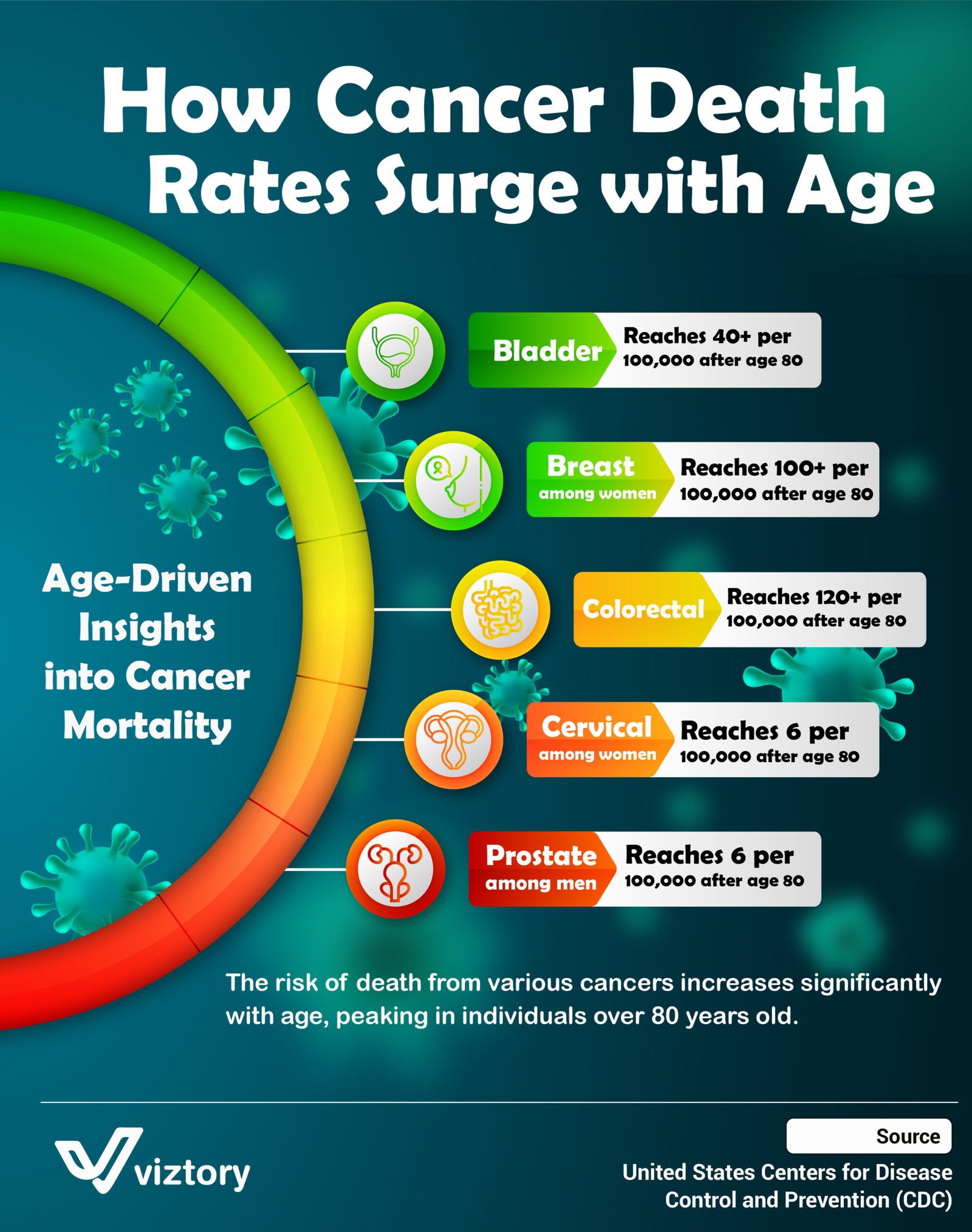How Cancer Death Rates Surge with Age
-
Feb, Mon, 2025
Cancer mortality rates increase dramatically with age, particularly for individuals over 80 years old. Specific cancers such as bladder, breast, colorectal, cervical, and prostate cancer show distinct trends, emphasizing the critical link between age and cancer risk. These patterns underline the importance of early detection, preventive measures, and age-specific interventions to improve outcomes.
Understanding the Age-Driven Risk
Bladder Cancer:
After the age of 80, bladder cancer mortality reaches over 40 per 100,000 individuals. This underscores the need for regular screening, especially for high-risk groups such as smokers and individuals with occupational exposure to harmful chemicals.Breast Cancer (Among Women):
Breast cancer mortality climbs to over 100 per 100,000 women beyond 80 years. Early mammography, lifestyle modifications, and timely treatment can significantly reduce this number.Colorectal Cancer:
One of the most prominent trends is seen in colorectal cancer, which reaches over 120 deaths per 100,000 people after age 80. Colonoscopies and other screening methods are essential in detecting and treating precancerous polyps early.Cervical Cancer (Among Women):
Cervical cancer, though less common, reaches a mortality rate of 6 per 100,000 women after 80. Vaccination against HPV and regular Pap tests play a vital role in prevention.Prostate Cancer (Among Men):
Prostate cancer also peaks at 6 deaths per 100,000 men after age 80. Regular PSA testing and informed discussions with healthcare providers can help manage risks effectively.
The Role of Technology in Combating Age-Driven Cancer Mortality
Technology has emerged as a key ally in cancer prevention, diagnosis, and treatment, especially for older populations:
- AI in Early Detection: Artificial intelligence is revolutionizing cancer diagnostics, allowing for the identification of abnormalities at earlier stages.
- Precision Medicine: Tailored treatment plans based on genetic profiles improve outcomes and reduce side effects for elderly patients.
- Telemedicine: Access to virtual consultations ensures timely medical advice, even for individuals with mobility constraints.
Promoting Healthy Aging
The data emphasizes the critical role of preventive healthcare and education in reducing age-driven cancer mortality. By adopting a proactive approach, including regular screenings, a healthy diet, and physical activity, individuals can significantly lower their cancer risk. Governments and healthcare providers must also prioritize age-specific initiatives to support the aging population and mitigate the growing burden of cancer mortality.

